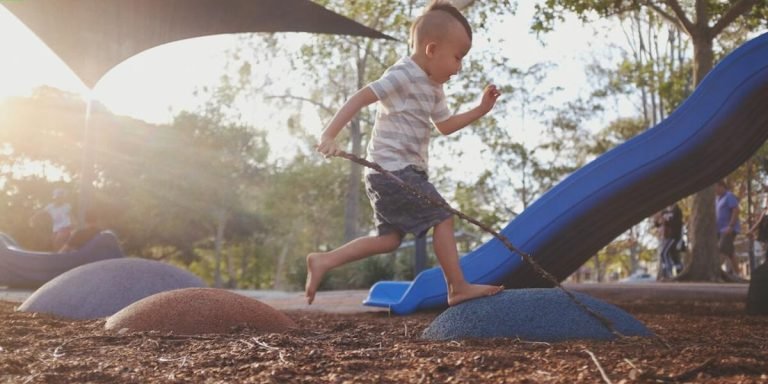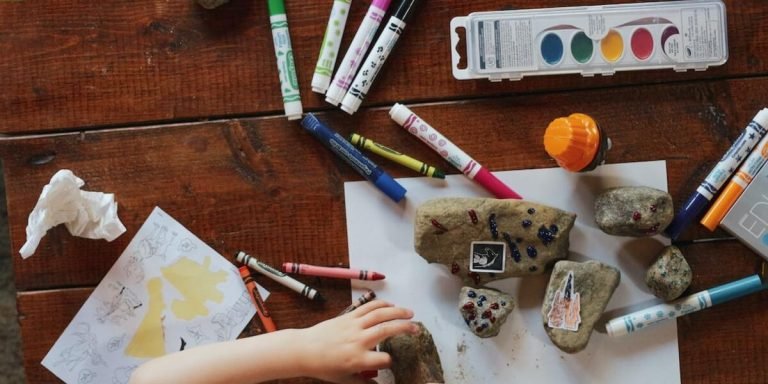Kahoot Review: A Comprehensive Look at Its Impact on Childhood Education
Diving into the world of digital learning tools, there’s one name that stands out boldly – Kahoot. This interactive platform has revolutionized how education is delivered and experienced in classrooms around the globe. For those who are new to it or looking for more insight, this comprehensive ‘Kahoot review’ will be a revealing exploration of its impact on childhood education.
The paradigm shift from traditional rote learning to now ‘Experiential Learning’ highlights educators looking for ways to make acquiring knowledge an exciting journey rather than just another chore for children. How does activity-based learning fit within Kahoot’s framework? What makes it so effective amongst youngsters?
The answers lie ahead as we delve deeper into the intricacies and effectiveness of using Kahoot in early educational settings.
Did you know?
A little-known fact is that Kahoot, a game-based learning tool, boasts over 50 million active users worldwide and has been shown to significantly improve knowledge retention in children compared to traditional teaching methods.
Understanding Experiential Learning through Kahoot
Kahoot, a popular learning platform, has extensively adopted the concept of experiential learning to make education more interactive and enjoyable. With its rich variety of games and quizzes that can be customized for any subject or age group, it allows children to actively participate in their own educational journey instead of passively receiving information.
Experiential Learning is all about acquiring knowledge through experiences. It’s the process wherein young learners are involved directly in a guided activity rather than sitting back as spectators. Kahoot simplifies this approach with intuitive, engaging activities designed specifically around school curriculum objectives — turning abstract concepts into tangible tasks which students execute enthusiastically.
In addition to providing high-quality content within a gamified environment suitable for Activity Based Learning (ABL), Kahoot also helps measure progress effectively while maintaining learner engagement levels at peak throughout sessions. This makes it an exceptional tool not just for teachers seeking innovative ways to impart lessons but even parents looking forward to reinforcing academic values right from home.
The Mechanics of Kahoot: Facilitating Interactive Education
Kahoot, a game-based learning platform, takes the spotlight in facilitating interactive education. This digital tool is applauded for making students more engaged and responsive — two qualities crucial to promoting experiential learning or activity-based learning.
Firstly, it creates a competitive atmosphere through gamification. Students answer questions posed on any subject within timed constraints; points are awarded for correct answers and speed of response—this stirs up excitement and drives participation.
Secondly, where traditional teaching methods might leave behind some learners due to their pace or complexity,Kahoot proves differently. Its simplistic design ensures everyone can participate irrespective of their competency level arriving at our ‘kahoot review’ keyword: Kahoot makes education not just accessible but also engaging across all levels.
Thirdly,the ease with which educators can create customized quizzes allows them to tailor content specific lessons , resulting in targeted skill development . They have absolute control over what kind of quiz they make : multiple-choice category has laid down easy comprehension paths for many-a-students .
Finally yet importantly , real-time feedback achieved through the leader-board system offers insights on individual student performance helping teachers understand areas that need more attention thus refining academic strategies further .
In 2023,Kahot continues being relevant as its adaptive nature meets contemporary education needs offering dynamic solutions towards creating environments conducive for Experiential Learning.
Impact Assessment: Measuring Learning Outcomes with Kahoot
Experiential learning is right at the heart of modern education. It’s a learn-by-doing approach, where children acquire knowledge through interactive activities rather than passive instruction. Kahoot – an online, game-based learning platform — brilliantly embodies this philosophy.
Let’s delve into how you can use Kahoot for experiential learning and assess its impact on your child’s educational outcomes.
First off: enlist learners in the process of creating their own quizzes or games – we call them ‘kahoots’. Learning takes root when concepts are engaged with creatively. By challenging your kids to craft original questions around study topics, they explore course material from new perspectives – synthesizing information and making it their own.
One notable feature worth mentioning is instant feedback during gameplay. Correct answers earn points while incorrect ones provide immediate clarification – dispelling misconceptions on the spot even as competition stokes motivation levels high.
Educators can measure progress through various avenues beyond just scores when Kahooting wraps up.
As you conduct more sessions using Kahoot! Look for trends emerging across different subjects or difficulty levels among pupils; this gives valuable insight into core strengths and areas requiring extra attention.
Integrating Activity-Based Learning into Curriculums with Kahoot
Kahoot is rapidly changing the face of childhood education. As we navigate through 2023, more and more educators are fusing their established curriculum with tools like Kahoot to facilitate activity-based learning. This online educational platform isn’t just a game; it’s an innovative tool that harnesses technology to encourage experiential learning.
In essence, integrating Kahoot into curriculums revolutionizes traditional teaching methods by making lessons interactive and engaging. Using quizzes, discussions or surveys on this platform can transform abstract knowledge into tangible understanding for students with various learning styles. Through these forms of active engagement offered by Kahoot, children aren’t merely absorbing information but actively exploring subjects and concepts.
Moreover, as part of its review process, Kahoot provides immediate feedback – both for teachers seeking insights about student comprehension levels and pupils receiving near-instantaneous evaluation on their performance during games or tests. The immediacy encourages quick correction of mistakes while fostering competitiveness between peers all underpinned by a fun-learning environment created via such platforms.
Curriculum Design Strategies for Enhanced Engagement
Incorporating activity-based learning into curriculums has been a game changer in the education sector. The advent of technological tools like Kahoot have further revolutionized this approach. In our kahoot review, we unravel how curriculum design strategies can enhance student engagement and boost their learning experience.
For starters, it’s important to break down complex topics into bite-sized chunks that are easier for children to understand. This not only makes lessons more digestible but also increases retention rates among students.
Secondly, make sure your curriculum is packed with variety and hands-on activities which promote experiential learning. Using Kahoot as an interactive platform allows you to create quizzes or games related directly to what kids are studying at any given time; making information recall fun rather than boring textbook revisions.
Next on the list is encouraging collaboration within classrooms through group projects and discussions facilitated by technology platforms such as Kahoot! It stimulates dialogues between learners fostering critical thought processes while building stronger communication skills amongst them.
Consider integrating real-world examples into your pedagogy whenever possible — illustrating relevance puts knowledge gained inside classroom walls right out there onto global canvas! And yes: use digital applications (like aforementioned Kahoot!) designed especially for these purposes – they’re user-friendly interfaces are perfect fit even for younger-age groups!
Last but definitely not least— feedback plays crucial part within activeness of any educational system too. Built-in assessment procedures enable educators gauge understanding levels amidst pupils assisting amendments befitting individual needs accordingly.
Analyzing Student Performance and Feedback on Activities
Analyzing student performance and gathering feedback after implementing activity-based learning through Kahoot is an essential step in the educational process. This can help educators make necessary adjustments to their teaching style or content, based on real-time data.
Firstly, throughout our Kahoot review, it’s important to note that this digital tool allows for instant assessment of student understanding. Educators can view students’ responses immediately during gameplay in 2023. Teachers get a detailed analysis showing how many participants answered correctly or incorrectly.
They have access to valuable insights into which questions were most challenging or easy for learners.
Secondly, these immediate results provide opportunities not only for evaluation but also redirection within lessons if required – creating a dynamic classroom environment responsive to learner needs with experiential learning at its core.
Thirdly, when analyzing student performance using Kahoot activities games as your yardstick – remember accuracy isn’t always everything! Speed matters just as much here; you’ll want students who can think fast under pressure too!
Moreover, integrating peer reviews within this platform provides constructive criticism among peers further promoting intellectual growth & collaboration skills—an invaluable aspect usually missing from traditional methods of education away from age-old report cards system.
Advancing Teacher-Student Collaboration Using the Kahoot Platform
Kahoot, a game-based learning platform that has taken the educational sector by storm over recent years. A crucial tool in the arsenal of educators globally, Kahoot aims to revolutionize classrooms and online teaching sessions through its interactive approach. According to our comprehensive review, teachers using this dynamic tool have found it instrumental for fostering better teacher-student collaboration.
Moreover, students tend not only enjoy these activities thoroughly thereby increasing participation rates but also attain improved retention which is one of the core goals when we speak about ‘learning’. At heart remains a deep desire within each youngster’s mind: engaging during lessons while simultaneously absorbing knowledge required now more than ever considering rapid advancement technology world 2023 today; hence why platforms like kahoot offer exactly what both parents as well as pupils need – fun way education system.
Innovations in Real-time Interaction and Teaching Techniques
In the era of digitalization, where everything is available at our fingertips, teaching and learning methods have also evolved. The traditional classroom lectures are being replaced with interactive sessions using platforms such as Kahoot.
Kahoot has emerged a game-changer in education technology by promoting experiential or activity-based learning through innovative real-time interactions. Our kahoot review provides an insight into how these innovations provide benefits over conventional techniques.
Firstly, Kahoot promotes collaborative learning among students and teachers. It involves all participants interactively instead of a one-way lecture approach common in classrooms.
Lastly innovations introduced by Kahoot promote creativity among youngsters Helping them think beyond textbook knowledge This not only broadens their intellectual horizon but also builds critical thinking skills so crucial for future endeavors.
Harnessing Data Insights to Personalize Educational Experiences
In our pursuit of innovative teaching strategies, the Kahoot platform has emerged as an invaluable tool in promoting experiential learning. This interactive game-based learning environment encourages active participation and fosters a sense of connection between teachers and students – qualities that are increasingly vital in today’s digital classrooms.
A highlight feature worth mentioning during this kahoot review is how adeptly it utilizes data insights for personalizing educational experiences. One must appreciate the platform’s capability to collate real-time responses from learners participating in various activity-based tasks. The immediate response system not only keeps children engaged but provides educators with valuable input about their student’s understanding level.
Imagine launching an impromptu quiz on multiplication tables or grammar rules through Kahoot! As each learner eagerly participates, they simultaneously transmit their individual levels of comprehension directly to you. This live feedback enables you to identify gaps or misconceptions instantly, allowing swift assistance targeted at specific problem areas before moving forward.
Additionally, over time these accumulated responses can shape educational trajectories tailored uniquely for every child based upon strengths and weaknesses unveiled through regular engagements on this incredible app.
What truly makes harnessing such data meaningful is its integration into lesson planning processes focused largely around experience-driven concepts like project-based assignments or hands-on practical activities often found within modern pedagogical frameworks.
For instance, if your class engages regularly with science-related topics using toys like LEGO blocks via Kahoot challenges; captured information may indicate a group inclination towards constructional reasoning supporting STEM Education objectives excellently.
Conclusion
In wrapping up this kahoot review, it’s clear that the fusion of education and technology can lead to fun learning experiences. Kahoot has demonstrated a significant impact on childhood education by making lessons engaging, interactive, and enjoyable for students while streamlining feedback mechanisms for teachers; an innovation shaping modern classrooms.
However, as with any tool or resource in our child’s educational journey, parent involvement is critical. That’s why we encourage you to explore more about effective childhood education strategies here at our website! From insights into other edtech platforms to advice on homeschooling during these challenging times – there are resources aplenty awaiting your curiosity dive.
Remember together: parents educators make the perfect team when navigating children’s schooling years effectively.







